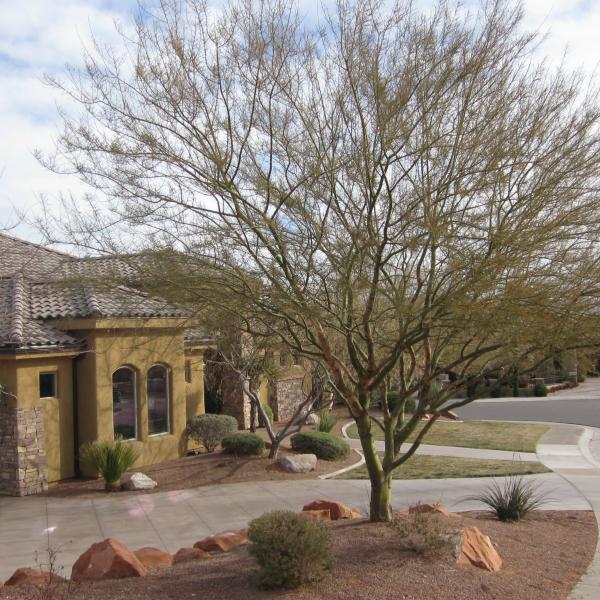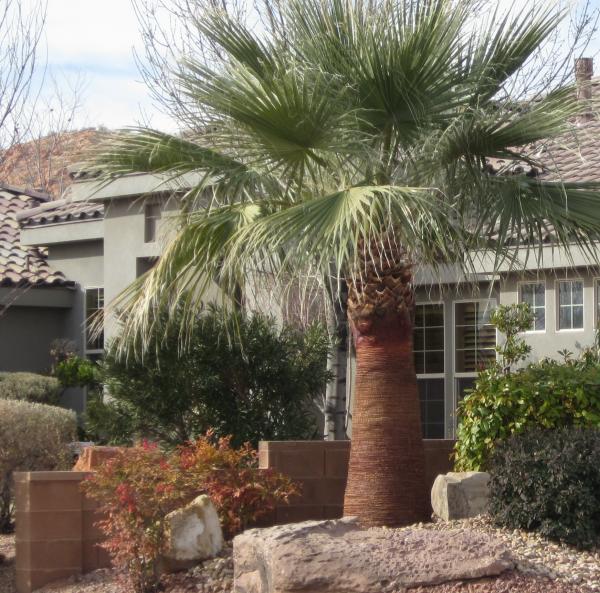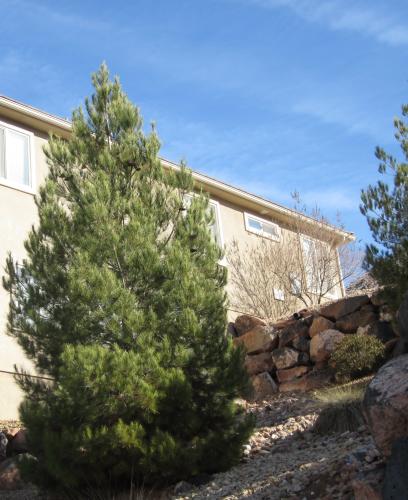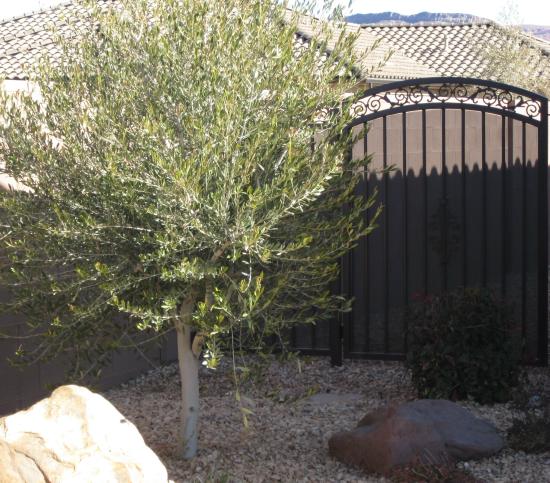Create a partial canopy using desert-trees
The addition of desert-trees to a southwest type of landscape is not always needed, but can add a canopy of life and color to an otherwise bleak landscape. These arid weather trees need lots of space. Like other desert plants and cactus can stand alone in the landscape and look just fine. The desert is simple and spacious, and this needs to be the theme when creating a design to fit this climate.
Desert-trees come in many exotic colors. Some have rino horns on their trunk, and others like the paloe verde have green bark.Most of these species flower during the heat of the summer too, so they create a variety of color and plenty of change through the seasons.


Desert Plants
It only makes sense that mother nature would design desert-trees with tiny leaves so they are not vulnerable to the sun. Here in St George, Utah we get on average about 320 days of sunshine per year, so desert varieties can thrive here, even if there is no lawn in the landscape.
I love the look of these lacy trees but you should know that desert trees are not maintenance free. These varieties of trees can be very messy. In fact the landscape maintenance involved with desert type trees will be more than any other type of tree. Plan ahead for that and put them down wind and in an area where the mess won't matter to you.

MORE ABOUT PALM TREES
You may want to consider
Palm Trees
when choosing desert tree varieties to include in your landscape plan. These have fairly low maintenance and stay green all year long. They need good
drainage
and do require maintenance to be an asset to the landscape. The palm tree combines the brown or grey of the trunk with a canopy of green fronds, this fits in a Mediteranian or tuscany style of landscape and makes the landscape seem more lush. These trees don't really go with the Southwest style landscape, unless you are using a single specimine palm as a stand alone ornamental. You will need to know which style of landscaping you want to achieve in order to decide which type of palms you will use, (if any at all).

MORE ABOUT PINE TREES
Another variety of desert tree is the
Pine Tree
. Mondell pines are the most frequently used variety here in St George, Utah, but there are others that I like to use in specific situations. Take for example the Stone Pine or the Black Pine. These work in a Southwest design or a Tuscan design because they have a darker color of green and also are unique specimines. Spindly or odd shaped pines like these are like a piece of art, they give contrast, and create interest in a landscape. Some of these varieties have a sort of blue green color to the needles which really stands out against a stone wall or structure. These trees can handle the extreme heat and wind that the harsh desert climate will dish out. And once established they get by with little water.
Some desert trees produce flowers. Most of these will flower during the heat of the season when everything else is looking burnt toast. One variety of
flowering tree
is the Chitalpa. This is a genetic spinoff from the catalpa tree. Long slender leaves hanging from a multi trunk form and covered with clusters of powder pink flowers. Chitalpa trees are naturally multi trunk trees and in the first couple years will need to be thinned out, but once established they produce an awesome canopy of flowery greenery. This
southwestern landscape
tree makes the desert look lush.
Another variety of desert-trees is the desert willow. Desert willow trees can be very messy, but I like to use the dwarf variety of the tree. As with most other dwarf plants and trees, the color of the flowers is more condensed and intense. Since it is a dwarf the mess is minimal and the tree doesn't overpower the landscape. This tree also is best used as an ornamental, or patio tree.
There are a few evergreen desert-tree varieties in the desert. Wilson olive, African sumac, and Japonese privot, are all varieties that I use on a regular basis. The Wilson Olive below is a great tree in a tuscany theme. It has the contrast of color with the light green leaves and the evergreen caracteristic that works well in a cool winter desert. We use these often and they work well in a smaller yard as a cornerstone plant when you are doing your
landscape plant
design layout.



Home
Top of page desert-trees






